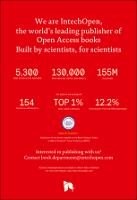Chapter Machine Learning Models for Industrial Applications
| dc.contributor.author | Enislay, Ramentol | |
| dc.contributor.author | Tomas, Olsson | |
| dc.contributor.author | Shaibal, Barua | |
| dc.date.accessioned | 2021-06-02T10:13:42Z | |
| dc.date.available | 2021-06-02T10:13:42Z | |
| dc.date.issued | 2021 | |
| dc.identifier | ONIX_20210602_10.5772/intechopen.93043_498 | |
| dc.identifier.uri | https://library.oapen.org/handle/20.500.12657/49384 | |
| dc.description.abstract | More and more industries are aspiring to achieve a successful production using the known artificial intelligence. Machine learning (ML) stands as a powerful tool for making very accurate predictions, concept classification, intelligent control, maintenance predictions, and even fault and anomaly detection in real time. The use of machine learning models in industry means an increase in efficiency: energy savings, human resources efficiency, increase in product quality, decrease in environmental pollution, and many other advantages. In this chapter, we will present two industrial applications of machine learning. In all cases we achieve interesting results that in practice can be translated as an increase in production efficiency. The solutions described cover areas such as prediction of production quality in an oil and gas refinery and predictive maintenance for micro gas turbines. The results of the experiments carried out show the viability of the solutions. | |
| dc.language | English | |
| dc.subject.classification | thema EDItEUR::T Technology, Engineering, Agriculture, Industrial processes::TB Technology: general issues::TBC Engineering: general | en_US |
| dc.subject.other | machine learning, prediction, regression methods, maintenance, degradation prediction | |
| dc.title | Chapter Machine Learning Models for Industrial Applications | |
| dc.type | chapter | |
| oapen.identifier.doi | 10.5772/intechopen.93043 | |
| oapen.relation.isPublishedBy | 09f6769d-48ed-467d-b150-4cf2680656a1 | |
| oapen.relation.isFundedBy | H2020-SPIRE-2016 | |
| oapen.grant.number | 723523 | |
| oapen.grant.acronym | FUDIPO |

